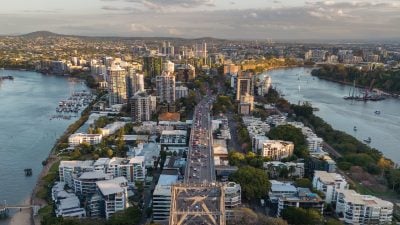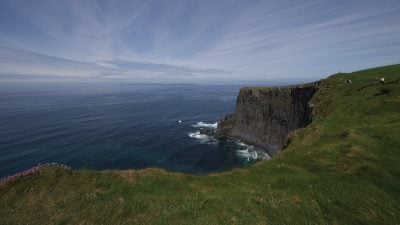Home / Africa & Middle East / Jordan / Five Faces of Jordan – E…
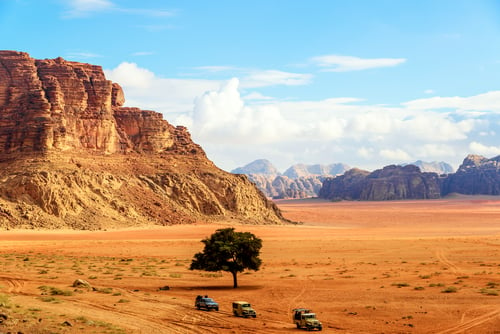
Five Faces of Jordan – Essential inclusions for all Jordan Tours
Many Westerners are fascinated by the Middle East, only to be put off their dream trip by fear of conflict or political instability in the region. Those would-be travellers are missing out, and for no logical reason. Some of the Middle East’s most enchanting and historic destinations have steered clear of recent troubles. Among them is Jordan, an ancient land steeped in Arabic, Roman, and biblical history, and the poster child for stability and safety in the Middle East.
Jordan packs a jaw dropping range of sights into its small land area, making it easy to explore in little more than a week. Here are five essential stops to include on all Jordan tours. Places you’ll be talking about for years!
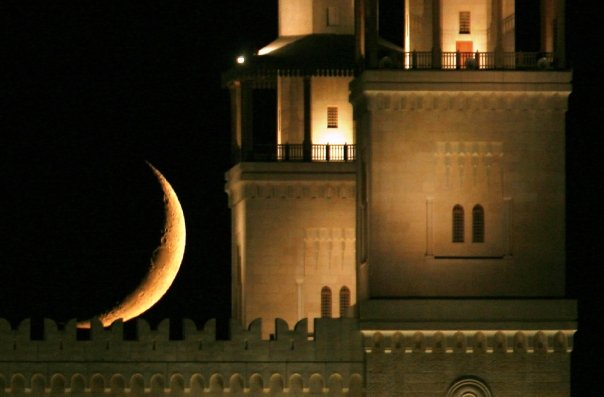
1. Amman – All that’s old is new again
Jordan’s capital gets a bit of an unfair rap, mostly because it’s a modern city, in a country better known for beautiful ancient sights. That’s still no reason to skip it. This is the centre of Jordanian culture in the 21st century, and your best chance to get a glimpse of what today’s Jordan – and by extension, the Middle East – is all about, away from western headlines. The comparatively liberal Islamic culture here allows women to dress as they like, and is frequently a haven for free-thinkers from Palestine and Iraq. Yet, you’ll also find traces of Jordan’s rich history, particularly amid Roman ruins such as the Nymphaeum or the Citadel. These gems reveal a hidden past – Amman has been around since 7000BC, making it one of the oldest, continually inhabited cities on the planet.
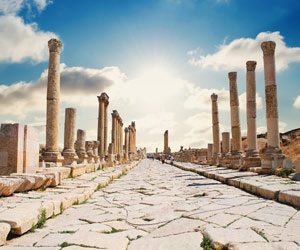
2. Jerash & Aljoun – Walk amid pillars of civilization
To really see the shapes of Jordan’s past, take a short trip north to Jerash, and the nearby city of Aljoun. Close your eyes atop the battlements of Ajloun Castle, and send your imagination back to the 12th century Crusades. With control over the northern Jordan Valley, Aljoun was of key military and trade importance at that time, and was inhabited by soldiers as late as the 19th century. After surviving invasion from Crusaders and Mongols, the only armies descending on it now are tourists – thankfully in much smaller numbers!
The ruins at nearby Jarash are testament to an earlier occupying force, the Roman Empire. Their legacy – the ancient city of Gerasa – survives today in many forms, including the Hippodrome, where you can still take a seat right where ancient citizens once enjoyed chariot races. Wander beneath the Arch of Hadrian, or take in a panoramic view of the Roman Oval Forum. Even with just a passing interest in ancient Rome, there’s plenty here to reward exploration.

3. Madaba and Mt Nebo – Mosaics, maps, and the Holy Land
Heading south from Amman, Madaba contains a number of Jordan’s ‘must-sees’, particularly for those interested in the country’s biblical history. Madaba itself is a small city that might not have emerged on the tourist trail at all, were it not for its astonishing mosaics, including the Madaba Map, which dates back to the 6th century. Found in the Byzantine church of St George, this is thought to be the oldest surviving map of the Holy Land, including Jerusalem. The level of detail in the map has allowed scholars a keen insight into Byzantine-era Jerusalem. It’s far from the only mosaic to be found here however, and excavation continues, led by the University of Toronto.
On the outskirts of Madaba, Mount Nebo overlooks the land depicted in the map. It is also said to be the place where Moses first glimpsed the Promised Land. Visitors will want to visit the Moses Memorial Church, where more beautiful and complex mosaics decorate the floor. You can even end your day with a dip – or float – in the nearby Dead Sea.

4. Petra and Wadi Rum – Film star Jordan
The natural beauty of Jordan – aided by its political stability – has been luring film crews for some decades now. Petra’s iconic Treasury has stood in for more Middle Eastern temples than any other site in the region. The Rose Red City can feel like something of a buried treasure, hidden at the end of the Siq, the towering sandstone valley that leads you in. Once you’re through, Petra is a massive site with many sections to explore, including the Great Temple, The Monastery, and The Obelisk Tomb, all carved from the red sandstone that gives the city its popular moniker. Established by the ancient Nabataeans, the city’s precise age isn’t known, but is thought to date back to the 5th century BC. Other empires have left their mark on Petra since, including the Byzantines, whose church within the city remains today, its signature Byzantine mosaic still intact.
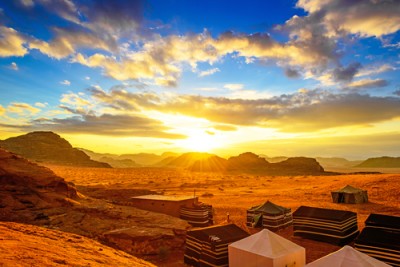
After a day exploring the site, get out into the vastness of Wadi Rum to contemplate all that history. This endlessly photogenic desert was Lawrence’s ‘Arabia,’ and has since played more than a few alien worlds on film. Wadi Rum is sometimes called the ‘Valley of the Moon,’ and camping here overnight might just be enough to transport you, particularly as the stars come out over the desert sky.
5. Aqaba – Fun in the Middle Eastern sun
When we think of Jordan’s most westernized city, Amman immediately comes to mind. But Aqaba, a seaside resort town in the south, gives the capital a serious run for the title. While it isn’t much known for ‘authentic’ Jordanian culture, it is a superb destination for snorkeling and scuba diving, with access to the Red Sea’s coral reefs.

Don’t let gleaming resort towers fool you into thinking Aqaba is devoid of history altogether, however. These streets date back almost to 4000BC, and there are numerous ruins to discover including the Aqaba fort, Aila/Ayla (the spelling of which depends on the era of history), and the old town. The Aqaba Archaological Museum is ready to put things into perspective for you. That’s if you’re not too busy shopping or lazing on the beach, unwinding from your Jordan adventure.
Suggested Itineraries:
5-Day Taste of Jordan
9-Day Jordan Treasures
For all other Jordan tours, please visit our website at www.goway.com.
Get more travel inspiration by email.
Subscribe
0 Comments

Get the latest travel trends & hear about the best deals on vacations around the world.
If you’re a Globetrotter, these are the newsletters for you!

